The African at 30: Part I: How the Dream was born
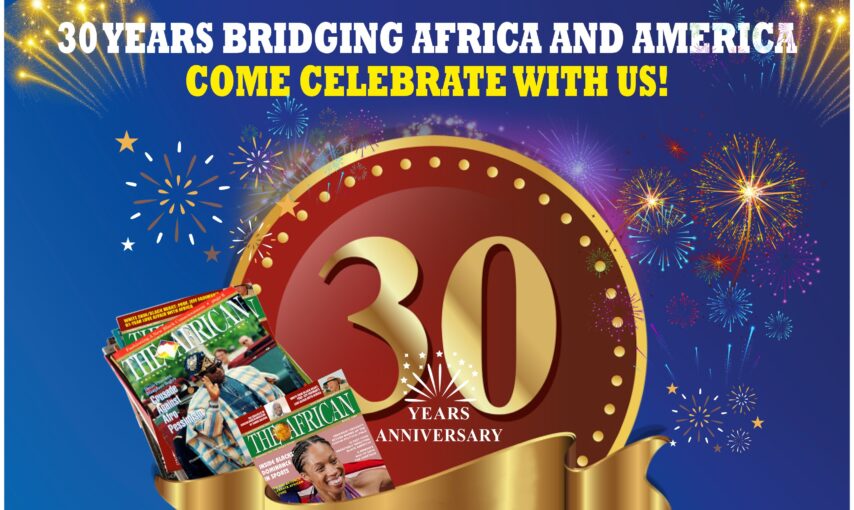
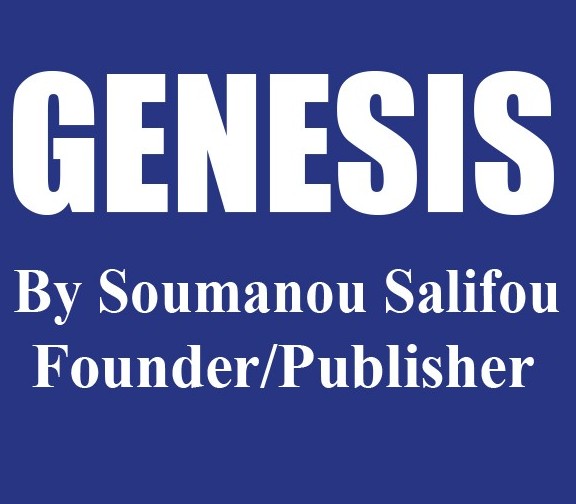 It’s not easy to recount a thrilling experience that has deeply shaped one’s life and other people’s lives without getting quite emotional, just as it’s hard not to give the impression of boasting. But boasting is not on my mind as I respectfully walk you, with utmost humility, through the extremely gratifying journey that I embarked on solo thirty years ago by creating and growing against all odds the only known African magazine published in this great nation that already had thousands of upscale publications.
It’s not easy to recount a thrilling experience that has deeply shaped one’s life and other people’s lives without getting quite emotional, just as it’s hard not to give the impression of boasting. But boasting is not on my mind as I respectfully walk you, with utmost humility, through the extremely gratifying journey that I embarked on solo thirty years ago by creating and growing against all odds the only known African magazine published in this great nation that already had thousands of upscale publications.
I did not start The African to be rich or famous. It has not made me rich or famous; so, there are no unmet expectations here. Probably its most important material contribution in my life was the pivotal role it played two decades ago by providing the means to end my children’s nonsensical relocation in Africa and bring them back to this land of opportunities where they now have a chance at the American Dream. The alternative is quite easy to imagine.
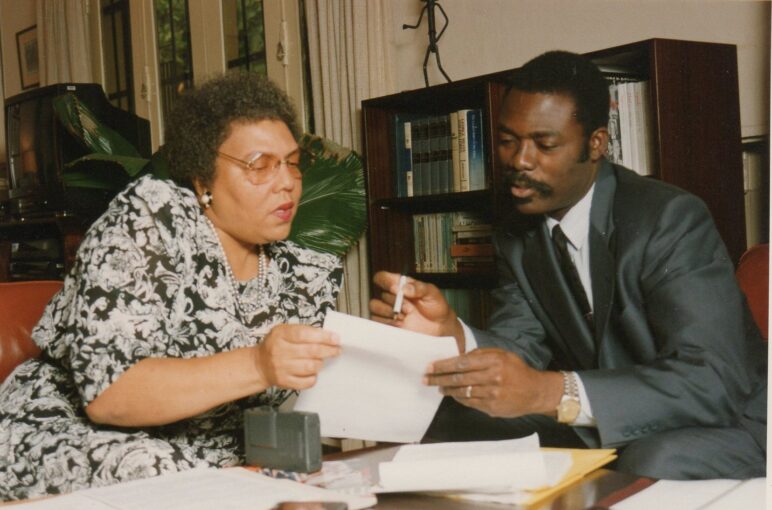
Rather, the creation of The African was the logical next step in my restless life that makes me constantly look for the next “bigger thing” to do to make an impact; the restlessness that made me quit a well-paying job at the U.S. embassy in Benin, my country of birth, at the young age of 28, to go to France in pursuit of an advanced degree, only to find myself in Cote d’Ivoire the following year, then seven years later at the prestigious Johns Hopkins University’s School of Advanced International Studies in Washington, D.C.; and, two years later, as an award-winning international radio broadcaster at the Voice of America, VOA, in Washington, D.C., with no prior training in journalism.
How the dream was born
The dream to start The African crystalized in my mind in 1992 at the pinnacle of my tenure at VOA, after the boredom of sorts that I felt following 8 years of hosting the Africa Division’s daily newsfeed that was broadcast to Africa by shortwaves and used by radio stations across the continent. That was in addition to my two monthly radio programs that were shipped by diplomatic pouch to Africa for broadcast by the local stations. It then dawned on me that I might make an impact, albeit a small one, if I tried to fight the pervasive negative image of Africa spread by the U.S. mainstream media.
I resigned in March 1993 and started working on the “next bigger thing” in my life. The African was born one year later.
I stated in my first Publisher Statement that I found it “cynical” on the part of the U.S. media “to paint to the American public nothing but an ugly picture of our continent, using human suffering such as the human tragedies in Liberia, Somalia, and Rwanda.” Then I stated the purpose of my pursuit: “To tell the full story about Africa as objectively as humanly possible and to fuel the laudable on-going effort to reconnect Africans and African Americans.”
In 1994, the Internet as we know it today did not exist. Thirty years ago, there were no Facebook, Instagram, Twitter, YouTube or WhatsApp. Cell phones did not exit. Phone calls from Washington, D.C. to nearby New York cost a fortune then, much more so to call Africa from the United States. It was therefore a big deal, before the emergence of these new technologies that shrank the world to a degree unimaginable back then, to start an African magazine in the United States.
A grand setting for a grand launch
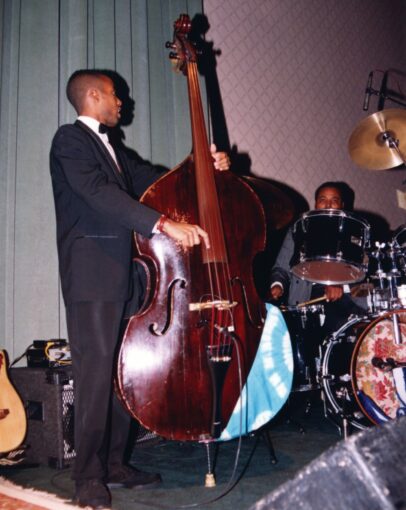
The Fifth Bishop John T. Walker Memorial Dinner in honor of then-President Nelson Mandela of South Africa upon whom Africare, the oldest and largest African American-led organization in the field of development aid for Africa, bestowed “The Bishop John Walker Distinguished Humanitarian Service Award” on the gorgeous autumn night of October 6, 1994, provided the marvelous setting for the launch of The African.
The most notable VIPs present besides President Mandela included then-President Nicéphore Soglo of Benin; the vice president of the United States, Al Gore; former Virginia’s Governor Doug Wilder, the first African American ever elected as governor in the United States; General Colin Powell, who had recently retired from his position of Chairman of the Joint Chiefs of Staff; the Rev. Jesse Jackson, one of the most influential Black men in the United States; not to mention C. Payne Lucas, president of Africare, the Black organization that convened the high-profile function attended by hundreds of illustrious guests.
Africare tapped President Nicéphore Soglo from my home country, Benin—whom I had interviewed one-on-one multiple times—as the keynote speaker, before President Mandela’s introduction by then-Vice President Al Gore. Having seen the magazine only earlier that day, a very impressed President Soglo asked me to join his press team to share the magazine with the guests at the gala. The two headlines on the glossy, bright-color cover of the maiden issue were: “Benin President Nicéphore Soglo’s Crusade Against Afro-Pessimism,” and “Fashioning a New Black Consciousness,” with a picture of the president wearing a breathtaking agbada (African three-piece suit).
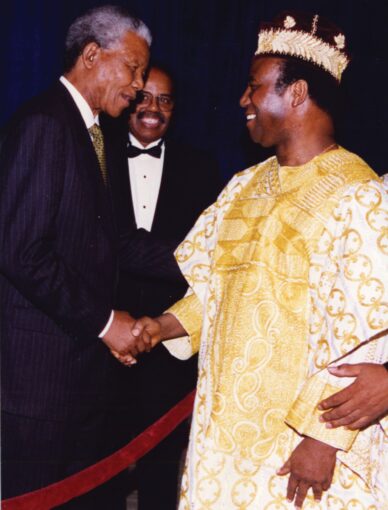
And there I was, a sideshow in the big picture of the event, but a good part of it after all, standing barely six feet away from some of the dignitaries.
I had been around top-level leaders before, but that night of October 6, 1994, was unique. It was the night Black America honored the towering figure that was President Mandela. It was the night President Nicéphore Soglo from the little-known West African nation of Benin was recognized for his country’s strides toward democracy. In a different way, it was also my night, the night my dream came to life and the cream of the crop of the capital of the greatest nation in the world had a piece of it. A picture of me watching with emotion General Colin Powell, former Governor Doug Wilder, and the Rev. Jesse Jackson glancing through the same copy of the magazine together with apparent admiration, became a treasure in my life.
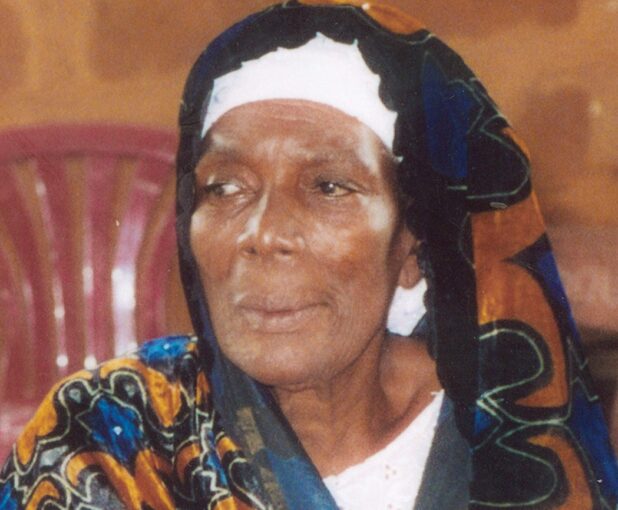
My mind took me five thousand miles to my birthplace, Benin, to the woman to whom I owe everything in this world and the next: my mother and best friend. She had no formal education, but she deserved a Ph.D. in parenting and the ability to survive the odds. With her path to success laid by my visionary father, the hardest-working woman in the world raised me and my siblings by herself after our father’s demise when I was only 11 and fought tooth and nail to send me—her oldest child—to what people of their generation called “the white man’s school.” But she probably didn’t think the skinny orphan she loved so much would be one day in a crowd like this, in the most powerful country on the planet.
Several magazines in one
I did not create The African to emulate anyone. However, unconsciously, as it were, The African turned out to be the combination of sorts of the three major African American magazines that were in circulation long before 1994: John H. Johnson’s Ebony which, in 1942, gave African Americans a platform that did not exist earlier; Essence, a magazine for Black women whose idea crystallized in 1968 in the minds of four Black pioneers: Edward Lewis, Clarence O. Smith, Cecil Hollingsworth, and Jonathan Blount; and Black Enterprise, founded in 1970 By Black entrepreneur Earl G. Graves, Sr.
Standing on its own merits, The African takes pride in being a pioneering magazine that provides a new kind of reporting that anyone familiar with the U.S. mainstream media’s reporting back then about African history, relations between Africans and African Americans, or African culture, knows did not exist earlier.
The best or nothing

In the United States, where the perception of Africa is negative—even in the eyes of people who know literally nothing about the continent—an African magazine is expected to be a mediocre product. Driven by the simple notion that the value of most things (even people, sometimes) begins with their looks, as my mother taught me, I made sure my dream magazine competes favorably, both in terms of substance and looks, in the demanding American marketplace. To paraphrase the Mercedes-Benz commercial that runs on American television, I wanted “The best or nothing.” In some ways, business is a war in which only the best win. So, I considered anything less than the best like going to a gun war with a pocketknife.
Not having an adequate initial capital—not unlike many other publishers before me—I wrestled for several days and nights with the choice between a full-color magazine and one partially in color and partially black-and-white. In the end, I went full color. I also opted for top-quality paper for the inside and shiny, varnished paper for the cover.
This is how was born thirty years ago in this country already saturated with thousands of magazines, on one of the most beautiful October days in my entire life, the new periodical with the beautiful name The African that I created with no money, riding on the crashing waves of the unwavering ambition to give Africa a voice it so badly lacked in the American media. I may not have gotten rich or famous in the process, but hundreds of thousands of young men in libraries across the United States, and as many high school students in New York and elsewhere got a piece of Africa through the groundbreaking reporting brought by America’s newest magazine back then with the motto “Bringing You the Whole Story.”
And the journey continues, unabated.

